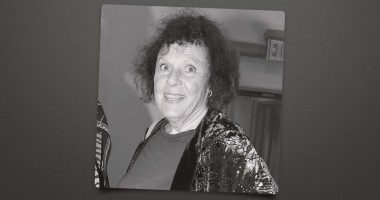
The potential for advances in technology to help create and share new types of stories, as well as diversity and inclusion, were key themes during a discussion of the future of storytelling at the View VFX and animation conference, which is taking place this week in person in Turin, Italy, and virtually via a live stream.
Speakers including Lucasfilm and ILM’s creative head Rob Bredow discussed everything from VR and AR experiences to new forms of entertainment such as Walt Disney World’s Star Wars: Galactic Starcruiser experience. “That kind of storytelling, building a film world, opened my eyes to the kind of stories we can create,” Bredow said of the later, citing opportunities “for more types of storytelling and more personalized stories.”
Director Peter Ramsey — an Oscar-winner for Spider-Man: Into the Spider-Verse — warned that these opportunities can be “more engaging if done well, and can be more cringey if it is not done well. … If the story doesn’t work, [the participant] won’t do that again.”
He acknowledged that there’s far more exploration needed to understand what will engage audiences. “Maybe you don’t need to provide a dramatic structure on a VR experience, maybe it’s its own medium,” he said as an example.
Conversation also included diversity and inclusion efforts. Karen Rupert Toliver, who leads film at Netflix Animation, described studio efforts to bring more diverse voices to its work. “We are doing so many thing to open it up . [For instance] the hybrid work environment has given so much access to new voices.”
Dreamworks Animation president Margie Cohn shared a similar goal: “We have doubled down on the early entry pipeline. We are going to schools where the population is diverse.”
Speakers noted that technological innovation, such as more powerful CPU and GPUs, could speed production and enable more types of storytelling. Cohn emphasized that with tech advancement, it’s important not to lose sight of the goal. “Innovation should serve storytelling and enable artists to deliver the stories,” she said. “Technology has made it all possible in incredibly wondrous ways. Whether we do it faster or not, that’s up for grabs.”
The evolution of virtual production was also on the agenda, with Milk VFX visual effects supervisor He Sun citing a need to bring costs down to make the process accessible to more filmmakers. “The cost is still quite high. There’s a lot of preparation time [involved]. There needs to be some technology to allow us to prepare [environments] faster,” he said, adding “it’s still early days. … We still have to replace things in post.” He added that universal workflows and open-source software could help.
Paul Debevec, a head of research at Netflix, is hoping for LED panels with better light sources, including broader illumination and dynamic range, for use in LED stages. “If we really want to reproduce any lighting environment, we need that,” he asserted.
Read More: World News | Entertainment News | Celeb News
Hollywood




